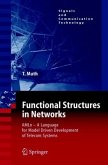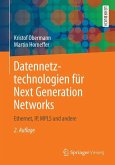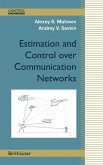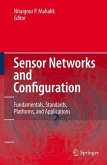The book describes a method for creating models of telecom systems. The method is intended for practitioning network architects and designers. The method emphasizes modelling the (very complex) functional structure of networks in a way that is independent of any hardware and software design methodology. The method allows designers to express their model in two main views: a generic view and a system view that takes protocols and network configuration issues in account. The idea is to retain a stable view (the generic) in the context of constant changes and large variations within the system view. The expected benefits are large savings in telecom systems development and maintenance. The terminology is domain unique, i.e. based on de-facto telecom terminology. All concepts that are used in modelling are well defined. The purpose with using a telecom-oriented terminology instead of industry-standard methods for software and protocol design (e.g. UML and SDL) is to be able to create models that are expressive and intelligible for network architects and designers. Models are created as graphical models that show the functional and physical structure of networks on different levels of details. Information on properties, including behaviour, are attached to models. A fairly small set of symbols are used in modelling.
The architecture of "The Worlds Biggest Machine^" is of course expressed in the many underlying communications standards; however it is far from explicit nor readily accessible. While on one hand, marketing people are busy looking for their so called "Killer Applications" that will maintain the economic growth of this machine, the engineers are struggling to keep up with the myriad of networks, pro tocols and standards that interconnect an ever growing number of network services across a rapidly increasing variety of platforms and protocols. Within the industry, it is commonly accepted that fewer than 10% of engineers working in the field have sufficient knowledge and experience to tackle the p- study and feasibility phases; that is to say, only this group can process the knowl edge and overview of the elusive architecture that allow them to identify the net work nodes, network services, protocols and messages that will be affected by adding new network functionalities. It follows that 90% of engineers are capable of performing the execution phase.
The architecture of "The Worlds Biggest Machine^" is of course expressed in the many underlying communications standards; however it is far from explicit nor readily accessible. While on one hand, marketing people are busy looking for their so called "Killer Applications" that will maintain the economic growth of this machine, the engineers are struggling to keep up with the myriad of networks, pro tocols and standards that interconnect an ever growing number of network services across a rapidly increasing variety of platforms and protocols. Within the industry, it is commonly accepted that fewer than 10% of engineers working in the field have sufficient knowledge and experience to tackle the p- study and feasibility phases; that is to say, only this group can process the knowl edge and overview of the elusive architecture that allow them to identify the net work nodes, network services, protocols and messages that will be affected by adding new network functionalities. It follows that 90% of engineers are capable of performing the execution phase.








